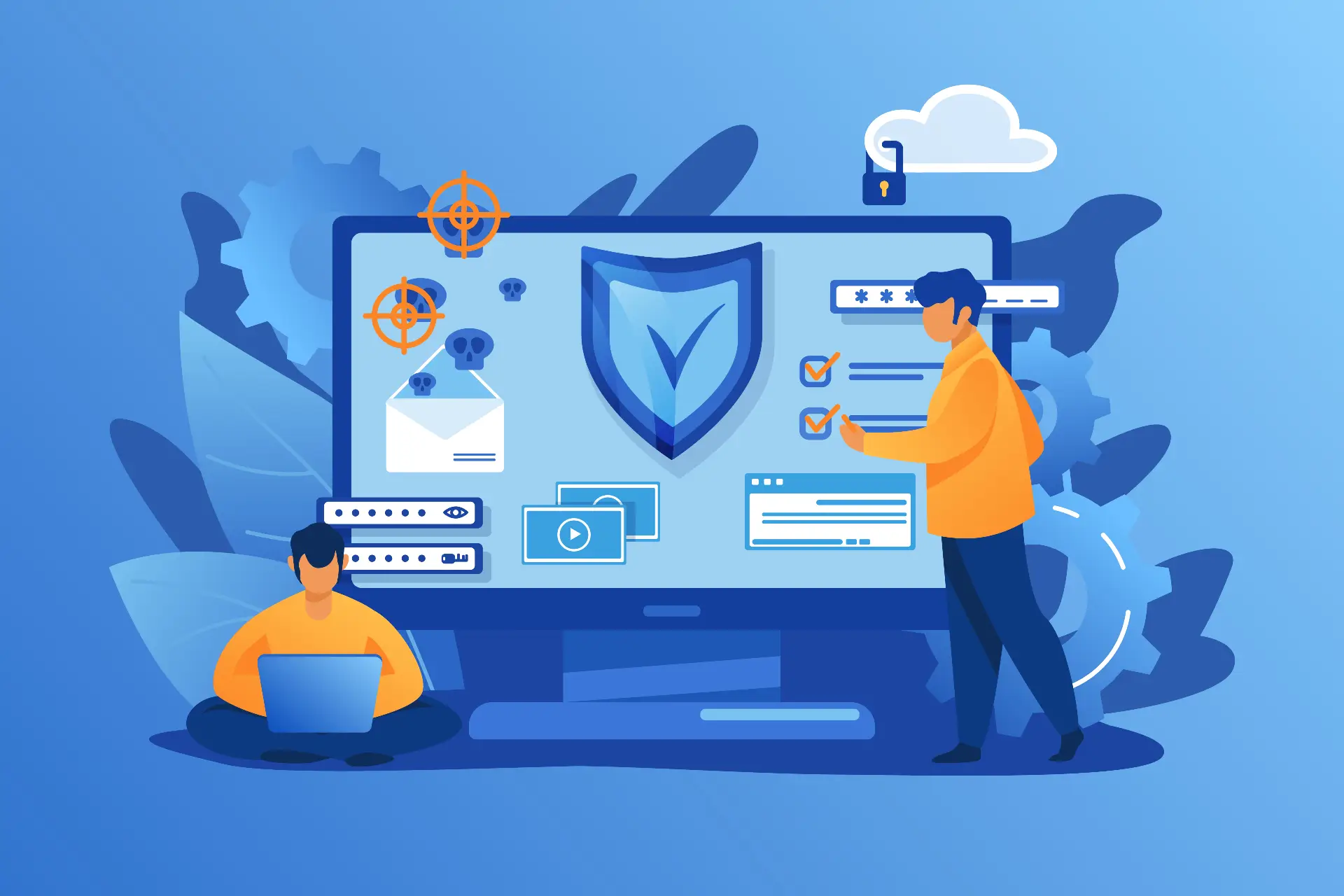Digital technologies are making Patient care easy and efficient and are providing better outcomes. Regardless, the upgrade of digital technologies and the increasing interconnectedness between different healthcare systems come with advancing cybersecurity dangers.
The advantages of healthcare technology advancement are undeniable. For example, electronic health records (EHRs) have evolved critically to enhance Patient outcomes and diagnostics, with 75% of healthcare providers conveying that EHRs help them supply adequate patient supervision.
Providers are rapidly relying on technological advances that have raised healthcare cybersecurity threats. For example, the cybersecurity company Emsisoft reports that the U.S. had over 560 Cyberattacks against healthcare facilities in 2020.
What can healthcare organizations do to manage cyber Attacks? Following are some strategies to follow:
- Enforcing Technical and technological cybersecurity measures
- Constructing a group of skilled professionals to ensure cybersecurity in the healthcare department.
- Designing a healthcare cybersecurity strategy focused on patient privacy protection
- Addressing vulnerabilities in legacy systems in healthcare
- Keeping tabs on new consequences to comprehend information technology (IT) challenges
These measures can strengthen an association’sassociation’s cybersecurity protection, underrate security breaches in healthcare, and ensure that critical systems remain active to reduce the impact on patient supervision.
Healthcare Cyber Security: Critical Issue
It is an area of information technology that focuses on safeguarding healthcare systems. These systems contain EHRs, health tracking devices, medical equipment, and healthcare delivery and management software. Healthcare cybersecurity concentrates on controlling attacks by protecting systems from unauthorized credentials and exposing patient information. The primary purpose is to assure the confidentiality, availability, and integrity of crucial patient data, which, if compromised, could put patient lives at stake.
Hospitals board hundreds and even thousands of patients, and as a result, they become excellent targets for hackers and make healthcare cybersecurity a critical consideration for hospital administrators.
Hancock Regional Hospital in Greenfield, Indiana, experienced an attack in 2018 and revealed how a ransomware attack could affect cybersecurity in hospitals. Cyberpunks accessed backup system data and eternally corrupted files, including EHRs.
Yet, the hospital stayed functional even after the IT team closed down the network.
However, the attack did affect the hospital financially, and it had to settle for a ransom of Four Bitcoins, i.e., $55,000, in exchange for its leaked data.
Cyberattacks come in numerous constitutions, from ransomware to theft of personal information. However, four issues are common throughout healthcare:
- Patient privacy protection
- The vulnerabilities of legacy systems
- The challenges of IT in healthcare
- Security breaches in healthcare
Patient privacy protection
As the healthcare industry is becoming more technologically associated, the risk of cyber theft also increases. The two types of robbery are outside theft and insider misuse.
External theft: Hackers outside a healthcare organization infiltrate Healthcare System and steal the Patient’sPatient’s Data for financial gains. For example, they use patients’ information to submit fraudulent claims to health insurers. External theft can also retain cyberpunks pushing healthcare organizations to settle a ransom amount in recovery for restoring patient data systems.
Insider misuse: Insider misuse often comes from stealing patients’ information for financial benefits or malicious intent. Other types of insider mishandling include curiosity (unwarranted access to data unrelated to care delivery) and comfort (overriding security protocols to make a job more accessible). Involuntary activities, such as human mistakes, mistyping, opening, or clicking phishing emails, make up the rest of insider misuse cases.
Vulnerabilities of legacy systems in healthcare
Despite various benefits, digitization offers many healthcare systems that keep outdated legacy systems for the following reasons:
Strict Budget: Shifting to a further system includes the expenses of purchasing the latest technology and paying technicians. It may also mean downtime, which facilitates possibilities for a healthcare structure to generate revenue.
Compliance guarantee: New equipment and technology can be tedious, therefore, organizations already gone through the process once, may surely prefer to avoid undertaking it again.
Upskilling costs: Training staff on new methods is time-consuming and expensive but essential to underrate mistakes. Jointly with training from technology agents, can aid supervisors in incorporating teamwork principles into contemporary healthcare strategies.
Complacency: Healthcare associations may restore an issue only after a system collapse. A bold strategy for substituting legacy systems can help avoid future problems.
Challenges of IT in healthcare
The advanced use of IT in healthcare has delivered advantages such as finer communication between doctors and patients, mechanization of manual duties, and improved contact between physicians caring for the same patients. In addition, IT and digitization have entrusted patients to make sounder judgments about their supervision, as patients have greater access to data about their fitness.
Benefits of IT and digitization in healthcare:
- Easing inefficiencies
- Enhancing healthcare access
- Reducing healthcare expenses
- Improving maintenance grade
- Delivering personalized treatment for patients
To accomplish the advantages, related technologies are essential, although they are also prey for cyberattacks and data breaches. Despite external violations exceeding inner misuse as the predominant source of security risk, internal abuse is typical in the healthcare industry compared with other sectors, according to Verizon.
Security breaches in healthcare
In 2020, the healthcare industry witnessed hackers seizing the benefit of COVID-19 apprehensions. One example concerned an email about a presumed “coronavirus map” to track COVID-19 cases, and on clicking the link, it triggered information stealer malware that stole passwords and credit card information.
Some of the most significant data violations of 2020 came from vulnerabilities in healthcare vendor systems, phishing attacks, and fraud schemes.
Related Tag- phishing attack, cyberrisk, cyberattack, healthcare risk, breaches, security, patient privacy protection, healthsector cyberrisk, cybersecurity



